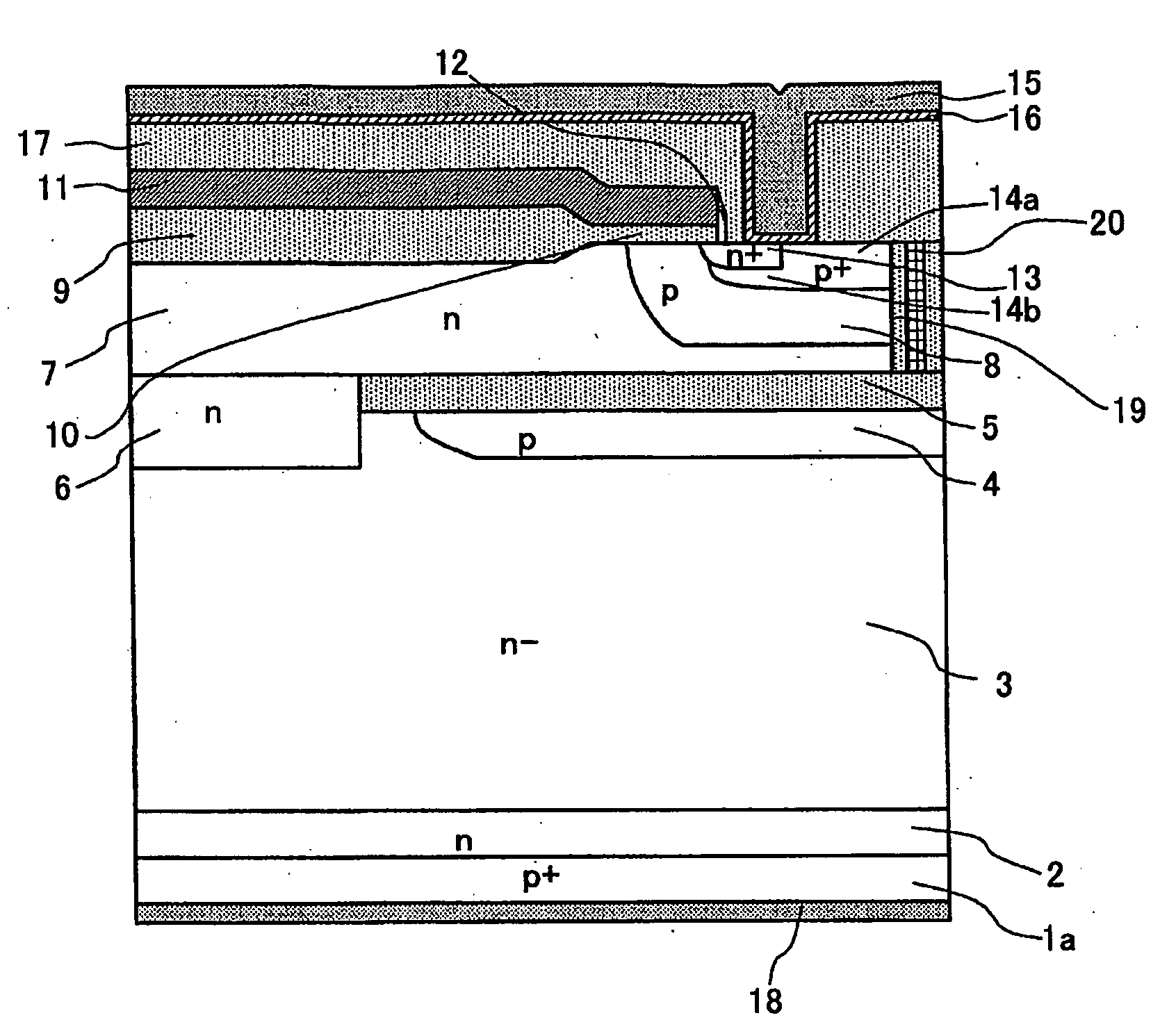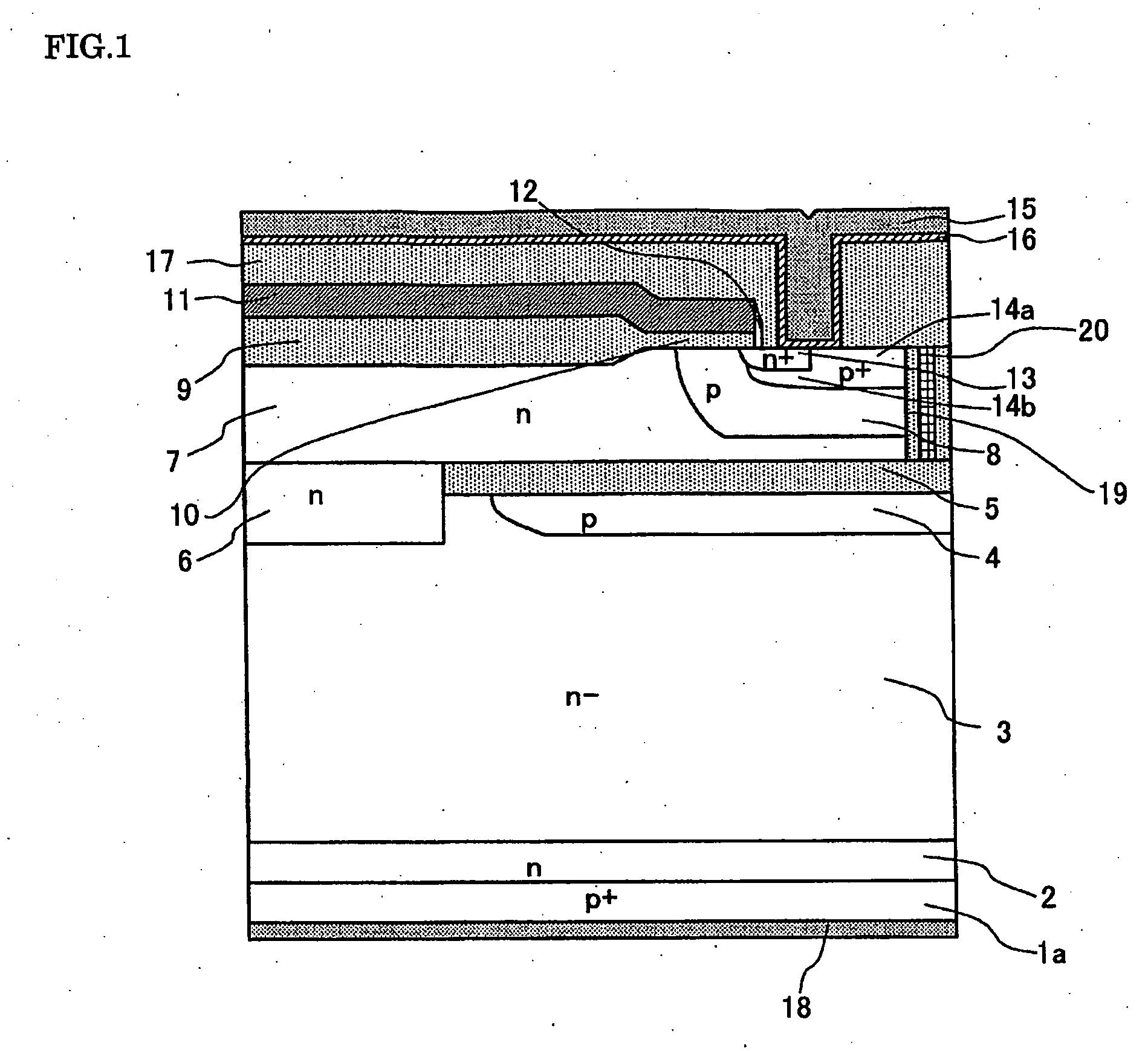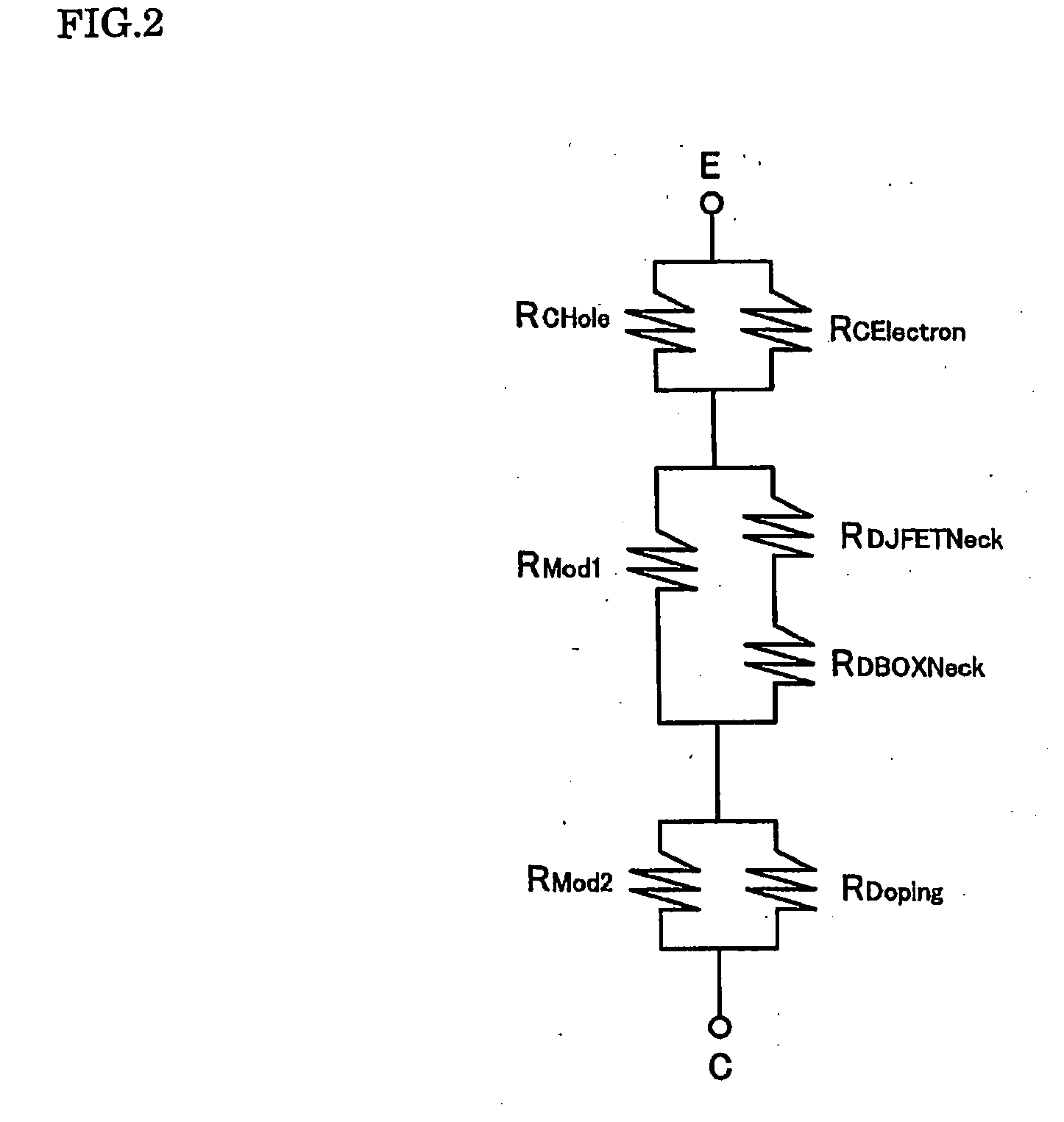Semiconductor device and the method of manufacturing the same
a semiconductor and semiconductor technology, applied in the direction of semiconductor devices, semiconductor/solid-state device details, electrical apparatus, etc., can solve the problems of not being able to achieve consumer application wide adoption, and achieve excellent thermal properties, high breakdown voltage, and high latch-up withstanding capability
- Summary
- Abstract
- Description
- Claims
- Application Information
AI Technical Summary
Benefits of technology
Problems solved by technology
Method used
Image
Examples
first embodiment
[0150]FIG. 1 is a cross sectional view of an IGBT according to the first embodiment of the invention. Referring now to FIG. 1, an n-type buffer layer 2 is disposed on a p+-type collector layer (low-resistance layer) 1a and an n−-type drift layer 3 is disposed on n-type buffer layer 2. The first n-type region 7 is above n−-type drift layer 3. A buried insulator region 5, such as an oxide film, is disposed partially between n−-type drift layer 3 and first n-type region 7, constituting a partial SOI structure.
[0151]The region between the n−-type drift layer 3 and the first n-type region7, therein any buried insulator region 5 is not present, is the second n-type region 6. The second n-type region 6 is in contact with n−-type drift layer 3 and first n-type region 7. The n−-type drift layer 3, the second n-type region 6 and the first n-type region 7 constitute the drift region (the IGBT base region) that sustains the breakdown voltage. A p-type region 4 is disposed between the buried ins...
second embodiment
[0175]FIG. 6 is a cross sectional view of an IGBT according to a second embodiment of the invention. Referring now to FIG. 6, p-type body region 8, which is spaced apart from buried insulator region 5 in the IGBT according to the first embodiment, is in contact with buried insulator region 5 in the IGBT according to the second embodiment. The other configurations in the IGBT according to the second embodiment are the same with the configurations in the IGBT according to the first embodiment. The structure according to the second embodiment is suited for the thin film devices, in which the semiconductor layer on buried insulator region 5, that is the first n-type region 7, is 1 μm or less in thickness. For applying the structure according to the second embodiment to the IGBTs, for which high-speed operations are required, it is effective to decrease the Miller capacitance and the capacitance Cgs between the gate and the source by shortening polysilicon gate electrode 11, emitter elec...
third embodiment
[0176]FIG. 8 is a cross sectional view of an IGBT according to a third embodiment of the invention. Referring now to FIG. 8, the planar gate structure in the IGBT according to the first embodiment is replaced by a trench gate structure in the IGBT according to the third embodiment. The trench gate structure is formed in the location of the IGBT, in which the trench separation structure is formed according to the first embodiment. The n+-type emitter region 13 is formed in adjacent to the trench gate structure. Since this structure makes it hard for the parasitic thyristor to work, the latch-up withstanding capability is improved. The other configurations according to the third embodiment are the same with the configurations according to the first embodiment. As illustrated in FIG. 8, p+-type buried low-resistance region 14b and gate-side-wall spacer film 12 are not disposed.
PUM
 Login to View More
Login to View More Abstract
Description
Claims
Application Information
 Login to View More
Login to View More - R&D
- Intellectual Property
- Life Sciences
- Materials
- Tech Scout
- Unparalleled Data Quality
- Higher Quality Content
- 60% Fewer Hallucinations
Browse by: Latest US Patents, China's latest patents, Technical Efficacy Thesaurus, Application Domain, Technology Topic, Popular Technical Reports.
© 2025 PatSnap. All rights reserved.Legal|Privacy policy|Modern Slavery Act Transparency Statement|Sitemap|About US| Contact US: help@patsnap.com



